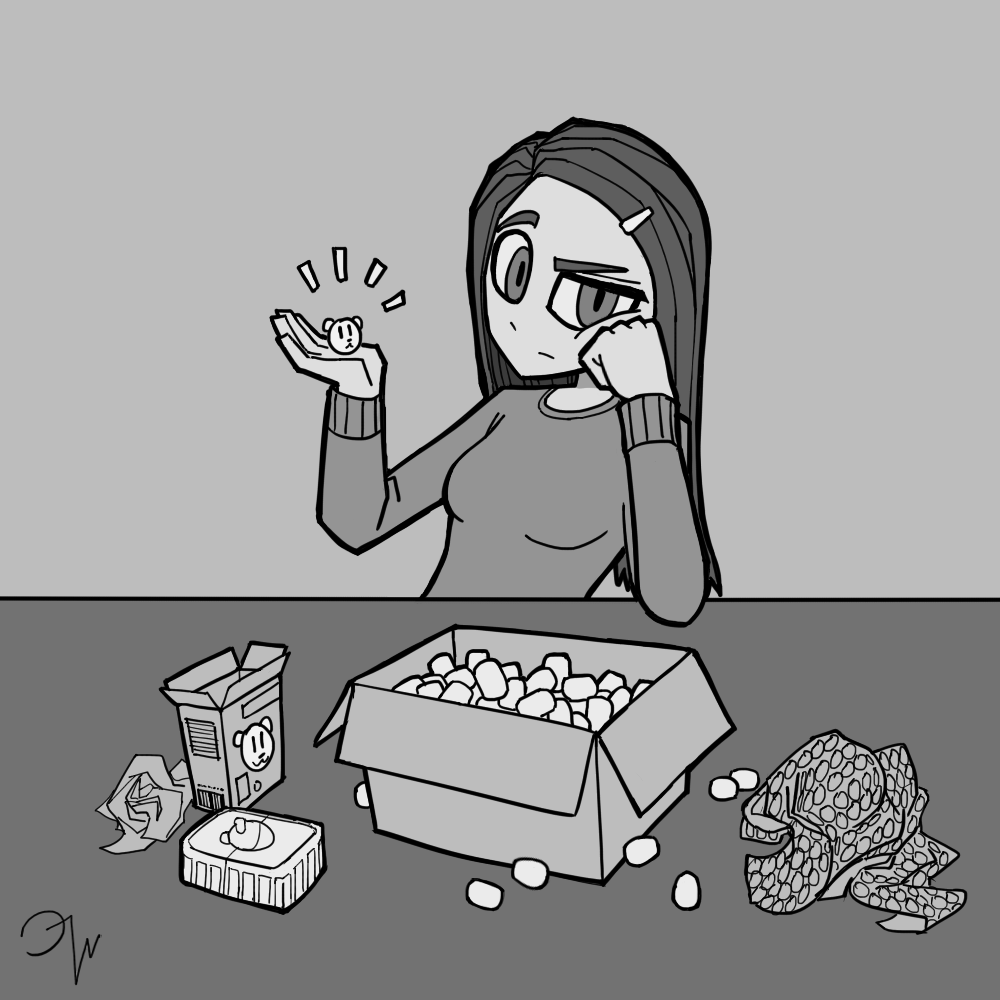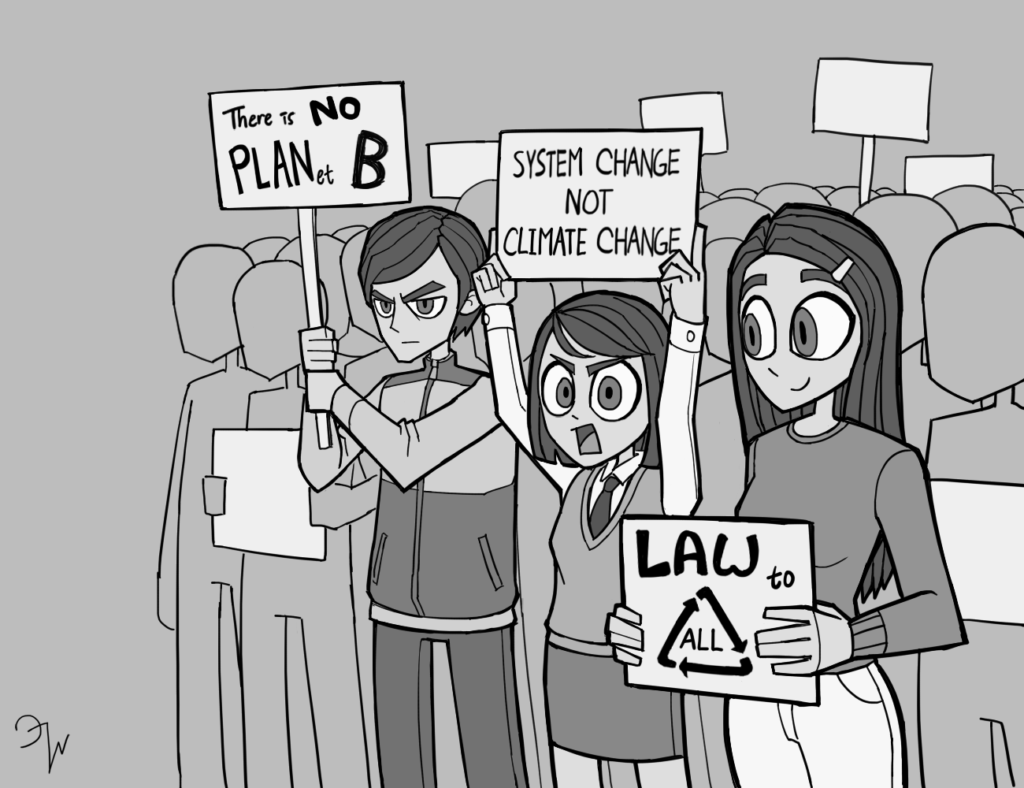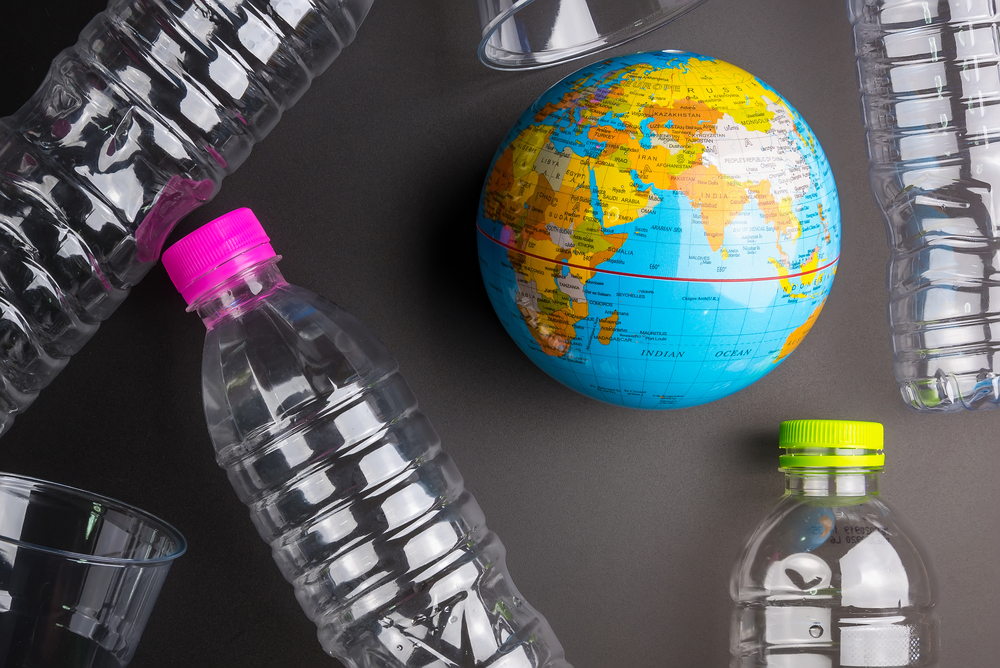All That Plastic
By Chung Hyunhwa.
The Reality of Recycling
It was only in 2021 that I was awakened to see where we were. My closest friend pleaded with me about our environmental status. She had read several books about environmental issues and started using bamboo toothbrushes and waste-free shampoo bars. I took the future of our next generation seriously and started reading books, listening to lectures, and participating in campaigns.
Many of us are fed up with the trash problem, but not many doubt it will be recycled. In the 65 years of recent plastic history, it is known that only 9 percent of it was recycled. In Korea, the recycling rate of plastic has increased, but it is still estimated to be about 30 percent, according to Dr. Suyeol Hong, an expert in the recycling field. Also, in 2020, 1 Korean person used 67 kilograms of packaging plastic according to EUROMAP, ranking the second in the world. This may improve in 2021 because Korea has just implemented the separate collection of transparent PET water bottles for recycling. Considering all this effort to wash the material at home for recycling, it is still disappointing to confirm the numbers. The Gwangju Sangmu Incineration Plant is not running at the moment, so using the landfill is the only option. Reportedly, there will be no land available for landfills in 2030. Then what?

Manufacturers and Consumers
I feel relieved to know that a lot of consumers are into recycling. However, considering that we are all busy people and how much effort we are making to recycle, manufacturers should pay attention to product/package design to leave no trash. They should use a single material as much as possible, and if this is not possible, the design should allow people to separate the materials with ease, while ensuring the sanitation and protection of the products.
It may mean that products should be designed to maximize their functions but minimize the unnecessary plastic decorations. Consumers should also change their attitude toward packaging. I sometimes read complaints about packaging or wrapping even though the product was delivered with no problem. If consumers keep this attitude that packaging shows the manufactures’/sellers’ care for them, then the manufactures will want to continue overpackaging and overwrapping.
Why Go Plastic-Free?
Plastic lasts 500 years, and incineration of plastic releases 90 times – 90 times!!! – more carbon-dioxide than paper. Besides, hazardous gas including dioxin is released into the air as a result of incomplete combustion. Plastic is broken down into microplastics or nanoplatics that can be absorbed into the brain or the placenta even when not burned. In the sunlight, the process speeds up, so now we should not use plastic in the first place and instead pursue a plastic-free lifestyle.
Biodegradable plastic breaks down only at the right temperature – higher than 58°C – and under certain other conditions. In addition to being pricier, it is not strong enough for multipurpose uses, is not recyclable, and is not entirely safe after decomposition. If it were buried or burned in the wrong condition, this plastic would also definitely release carbon-dioxide. There are many categories that plastic is separated into: PP, HDPE, LDPE, PS, PET, PVC, and Other. Apartment complexes separate plastic into only transparent PET bottles and all the rest together. PET that is not transparent water bottles may not be recycled. At the separation facility, workers select materials manually, so small pieces will all go into the incinerator or a landfill. It is necessary to increase the recycling rate so as not to use petroleum, a fossil fuel, and to decrease the use of plastic that will turn into greenhouse gases or microplastics. Advanced technology or public jobs can help do this.

The Laws and the System
Manufacturers should design goods using a single material. If they want to make goods using more than two kinds of materials, they should explain this, justify the reasons, and design them to allow easy separation. Eventually, they should attain design permits to do this sort of packaging legally. As we put warning labels on cigarette packs, the law should force manufacturers to mark the kind of materials used for the product and the packaging very visibly on the front side so that consumers cannot avoid seeing the mark and can separate the materials accordingly. (Many of us need magnifying glasses to find these marks now.) In addition, distributors and retailers should stop wrapping vegetables in styrofoam dishes and plastic wrap. The stickers on bottles should be easily removed or the product should go entirely label-free. Anything that is not recyclable should be marked “Not for Recycling” clearly so that buyers can decide if they want to purchase goods that include trash. It is magnificent to see some manufacturers starting to go minimal on their packaging and show that they care about the trash issue, but pertinent laws and an efficient system are the shortcut.
There should be a system to give benefits such as carbon-free bonuses or “green marks” to package-free product manufacturers or their distributors. Nowadays, AI-assisted recycling machines are on the market to reward people directly with credit card points. The government should install such machines everywhere to encourage recycling. There should be a lot more collection areas for recycling materials for more efficiency in every neighborhood. There should be a webpage and/or an app to report whether goods are easy or not easy to recycle. It is important to educate the citizenry and encourage the manufacturers, but it is way more important to create the necessary laws and efficient systems for more comprehensive and effective recycling.
Taking Action and Banding Together
Korea declared its aim to become a carbon-neutral society by 2050, but Gwangju declared that it would reach this goal by 2045, which is five years earlier. Gwangju is well known for its citizenry that contributed greatly to Korea’s democracy. There were people who fought with their lives, and the citizens banded together to overcome the May 18 uprising in 1980. Now, is it not time once again to use our citizenry as a beacon to protect our earth from this climate crisis? I hope more citizens will come to the fountain on Fridays in front of the ACC – which once was the rallying plaza for our people to keep Gwangju safe from a brutal military dictatorship – to campaign voluntarily and to spread solidarity throughout the country.
If we do not act now, as in the movie Interstellar, our future generations may not have any other career options but to become farmers to produce their own food for survival, while corn may be the only food that grows on the crisp, dry land. Scientists may also have to search for a way to evacuate humankind to another planet, which is probably impossible to find. Or, as in the movie 2012, only the people who have proven the value of their genes would be accepted on the “Ark,” and the rest of us may face a destiny of death outside of said “Ark.” We all breathe the same air, drink the same water, and face the same climate crises, no matter what religion or ideology we have. It is now high time that the “Candle Protest for the Environment” should ignite.
Illustrations by Wi Hunho.
Note: This piece originally appeared on the blog https://blog.naver.com/icanfly2you/
The Author
From Gwangju, Chung Hyunhwa is currently leading Gwangju Hikers, an international eco-hike group at the GIC, and getting ready to teach the Korean language. Previously, she taught English in different settings, including Yantai American School and Yantai Korean School in China, and has worked for the Jeju school administration at Branksome Hall Asia in recent years. She holds a master’s degree in TESOL from TCNJ in the U.S.







